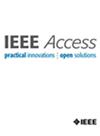QRS-Trs: Style Transfer-Based Image-to-Image Translation for Carbon Stock Estimation in Quantitative Remote Sensing
IF 3.4
3区 计算机科学
Q2 COMPUTER SCIENCE, INFORMATION SYSTEMS
引用次数: 0
Abstract
Forests serve as vital carbon reservoirs, reducing atmospheric CO2 and mitigating climate change. Monitoring carbon stocks typically combines ground-based data with satellite remote sensing, yet accuracy remains a challenge. This study analyzes Huize County, China, using GF-1 WFV and Landsat TM images and introduces the Quantitative Remote Sensing Transformer (QRS-Trs), which leverages style transfer and attention mechanisms to enhance carbon stock estimation as an image-to-image translation task. QRS-Trs demonstrates three advantages: 1) Swin-Pix2Pix effectively reduces inter-domain discrepancies caused by sensor and lighting variations while excelling in de-clouding, outperforming Pix2Pix. 2) It incorporates a median filter to eliminate anomalies and a mask module to exclude non-target areas, achieving MAE =16.29 Mg/ha, RMSE =29.38 Mg/ha,求助全文
约1分钟内获得全文
求助全文
来源期刊

IEEE Access
COMPUTER SCIENCE, INFORMATION SYSTEMSENGIN-ENGINEERING, ELECTRICAL & ELECTRONIC
CiteScore
9.80
自引率
7.70%
发文量
6673
审稿时长
6 weeks
期刊介绍:
IEEE Access® is a multidisciplinary, open access (OA), applications-oriented, all-electronic archival journal that continuously presents the results of original research or development across all of IEEE''s fields of interest.
IEEE Access will publish articles that are of high interest to readers, original, technically correct, and clearly presented. Supported by author publication charges (APC), its hallmarks are a rapid peer review and publication process with open access to all readers. Unlike IEEE''s traditional Transactions or Journals, reviews are "binary", in that reviewers will either Accept or Reject an article in the form it is submitted in order to achieve rapid turnaround. Especially encouraged are submissions on:
Multidisciplinary topics, or applications-oriented articles and negative results that do not fit within the scope of IEEE''s traditional journals.
Practical articles discussing new experiments or measurement techniques, interesting solutions to engineering.
Development of new or improved fabrication or manufacturing techniques.
Reviews or survey articles of new or evolving fields oriented to assist others in understanding the new area.
 求助内容:
求助内容: 应助结果提醒方式:
应助结果提醒方式:


